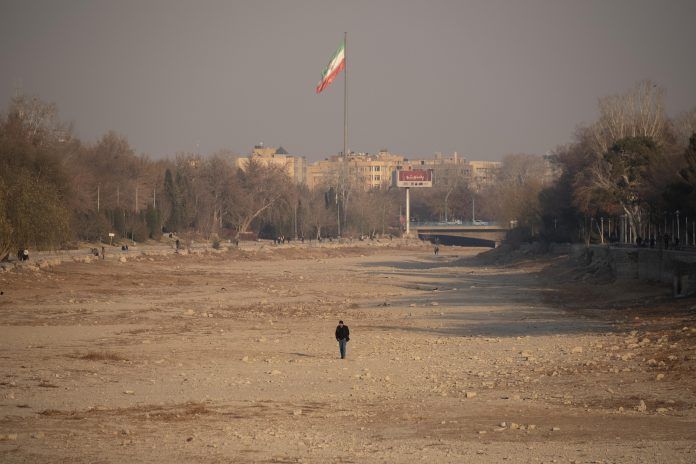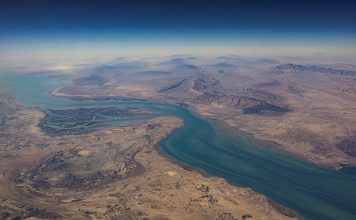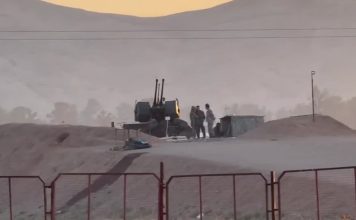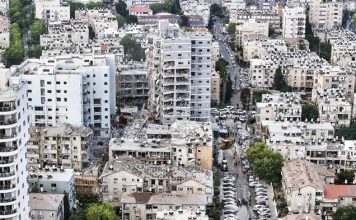
By Kayhan Life Staff
Iran will face water stress by 2025 and water scarcity by 2040, the Tehran-based Hamshahri newspaper reported on June 26, quoting Dr. Abbasali Nobakht, the newly appointed head of the Natural Resources and Watershed Management Organization.
Speaking at his induction ceremony, Dr. Nobakht, deputy Agriculture Jihad minister, said: “Iran is among countries that will face water stress by 2025 and water scarcity by 2040 because of climate change and drought.”
“Of the 30 million hectares of the Zagros steppe, 6 million hectares are covered with forest, which provides 40 percent of the country’s water reservoir,” Dr. Nobakht noted. “Our job is to protect Iran’s natural resources. Protecting our environment is directly linked to national and food security.”
The Zagros Mountains Forest steppe spans 11 provinces, mainly through the country’s western border, and is home to 400 species of plants and wildlife.
Dr. Nobakht explained that based on United Nations Development Plan (UNDP) environmental models, Iran is among countries that will face water stress by 2025 and water scarcity by 2040 because of climate change and drought.
However, he stressed that Iran’s environmental agencies were committed to reversing the trend and saving Iran from water crisis and drought in the coming decades.
ANALYSIS: Much of Iran Is Threatened By Drought and Water Scarcity
“We are the country’s soldiers, entrusted with protecting its environment. Through participation, cooperation, experience, and using university and research centers, we ensure Iran will not face severe drought in 2040,” Dr. Nobakht said.
“We must do our utmost to protect the country’s natural resources by improving our watershed management and using the existing capacity to safeguard forests and wetlands,” Dr. Nobakht noted. “Based on UNDP research and data, we must develop plans to manage drought.”
“To improve agriculture in the provinces in the lower parts of the Zagros Mountains range, we must protect vegetation in those regions,” Dr. Nobakht argued. “Of the 6 million hectares of Zagros Forest steppe, 1.2 million hectares have been adversely affected by climate change, human activities, dying oak trees, and widespread tree pests and diseases.”
“The Zagros Forest steppe can gradually absorb, produce and release on average 1,000 cubic meters of water annually,” Dr. Nobakht noted.
“Human activities including building dams in uplands, digging wells in lowland, and using natural water sources to provide water to industries, man-made towns, and developing villages have changed vegetation growth,” Dr. Nobakht explained.
“At the start of the 20-Year National Strategy, severe haze affected some 6 million hectares. That number has risen to 14 million hectares now,” Dr. Nobakht explained. “Vast regions of 14 provinces were affected by desertification at the start of the 20-Year National Strategy. That number has gone up to 21 provinces now.”
Desertification is caused by drought, deforestation, or inappropriate agriculture. There are four categories of drought: meteorological, hydrological, agricultural, and socioeconomic. There are five classifications of drought based on severity; abnormally dry, moderate drought, severe drought, extreme drought, and exceptional drought.
The “20-Year National Strategy,” drawn up in 2005, predicted that by 2025, “Iran should be the leading nation in the region in terms of economic, scientific and technological achievements.”
“We only have a few years before the end of the 20-Year National Strategy in 2025. We must work hard to realize the goals and objectives of the minister of agriculture jihad. We must meet the expectations of the officials and the people,” Dr. Nobakht added.
While Dr. Nobakht outlined a broad strategy to counter the impending water crisis, it is unclear how he and the organization under his leadership plan to halt the alarming rate of desertification of Iranian wetlands and prevent water scarcity and severe drought that the UNDP has predicted the country will face by 2040.
The 20-year National Strategy, first proposed in 1995 by then President Ali Akbar Hashemi Rafsanjani as part of “Iran’s 1400 Plan: The Revival of Islamic Civilization,” copied a more comprehensive socioeconomic program implemented by the late Mohammad Reza Shah Pahlavi.
However, Iran did not enact the 20-year National Strategy until 2005, after the Expediency Council ratified it. It was eventually split into four five-year developmental plans. The 20-year National Document will expire in 2025, but none of its objectives has been realized.
Speaking at Dr. Nobakht’s induction ceremony, Dr. Massoud Mansouri, the former head of the Natural Resources and Watershed Management Organization, listed the organization’s achievements under his leadership.
“Through planning and actions, we have surveyed an area of 6.4 million hectares in the past two years. The survey will be completed sometime this year,” Dr. Mansouri said. “Several medicinal herbs have been planted in 115,000 hectares of land between 2021 and 2022. We have also changed rangeland management from only livestock grazing to combined native vegetation and natural farming.”
Dr. Mansouri said the Natural Resources and Watershed Management Organization had designated 616,000 hectares as forest reserves, expanded forest areas by 140,000 hectares, developed a logging industry of 32,000 hectares and created 90 parks and 30 plant nurseries.
SPECIAL REPORT – He Returned to Iran to Help Save Its Environment. He Had to Flee.
Dr. Mansouri noted that with the cooperation between industries, mine, and transportation ministries, the water resources in some 100,000 hectares were successfully managed, and 85,000 hectares of arid land were revived.
The outlook for Iran’s environmental situation remains bleak, given the UNDP’s prediction of severe water shortage and drought facing the country in the coming decades.
Jailed Iranian Environmentalist Was Tortured, Says Sister of Fellow Detainee







